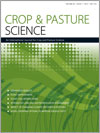The integrated soil–crop system management (ISSM) approach can potentially mitigate the loss of biodiversity in agricultural landscapes, ensuring crop yield with lower nitrogen (N) fertiliser input and minimised environmental pollution. The aim of this study was to test the hypotheses that overuse of N fertiliser could reduce the biodiversity of arbuscular mycorrhizal fungi (AMF) and that ISSM could help to maintain higher AMF biodiversity than the conventionally managed system in maize (Zea mays L.). The AMF community composition under three different treatments (conventionally managed, N-optimised and non-N-fertilised fields) was assessed by using both spore-based morphological taxonomy and DNA-based T-RFLP fingerprinting approaches. Maize roots in intensively managed fields formed functioning mycorrhizal symbioses even when a high rate of N fertiliser was applied. AMF diversity was higher under optimised N input, whereas AMF richness decreased when more N fertiliser was used. The N-optimised farms had AMF communities similar to those in the conventionally managed fields. The ISSM approach is recommended for sustaining crop yields without incurring continuing environmental costs and for maintaining AMF communities in intensively managed agro-ecosystems, especially in rapidly developing countries.
BioOne.org will be down briefly for maintenance on 14 May 2025 between 18:00-22:00 Pacific Time US. We apologize for any inconvenience.
How to translate text using browser tools
18 June 2015
Optimised nitrogen fertiliser management achieved higher diversity of arbuscular mycorrhiza fungi and high-yielding maize (Zea mays L.)
Xiaojing Wang,
Xinxin Wang,
Gu Feng
ACCESS THE FULL ARTICLE

Crop and Pasture Science
Vol. 66 • No. 7
June 2015
Vol. 66 • No. 7
June 2015
arbuscular mycorrhiza fungi
intensive farming
maize
nitrogen fertilisation




